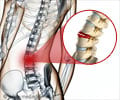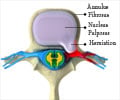- Levels of Injury - (http://www.spinalinjury101.org/details/levels-of-injury)
- Spinal cord injury - (http://www.mayoclinic.org/diseases-conditions/spinal-cord-injury/basics/definition/con-20023837)
- About Spinal Cord Injury - (http://www.medicinenet.com/spinal_cord_injury_treatments_and_rehabilitation/article.htm)
About
Spinal Cord contains 31 pairs of spinal nerves, which supply upper and lower extremities, internal organs like heart, lungs, bladder and bowel etc.
Spinal Cord injury can occur in both sexes, but is common in young males.
Spinal injury can be classified depending upon the extent of injury as below:
- Complete: Complete loss of motor and sensory functions at and below the level of injury.
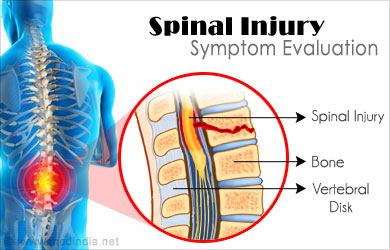
- Incomplete: Loss of sensory or motor/partial loss of either or both of them at and below the level of injury.
Presentation with a spinal injury varies depending upon the level of injury. Discussed below are the various levels of spinal injury:
- Upper Cervical nerves (C1-C4) – Presents with paralysis in upper limbs, legs and trunk, loss of bladder/bowel control, inability to speak, breathe and do daily activities.
- Lower Cervical nerves (C5-C8) - Varied levels of paralysis is observed in arms, hands, trunk and legs depending upon the nerve affected. Affected people can perform certain activities like breathing and speaking. Daily activities can be done with some amount of assistance.
- Thoracic nerves – Present with paraplegia, reduced/loss of bladder and bowel control. Upper body (arms, hands) control preserved, hence can perform most activities using wheel chair or specialized vehicle.
- Lumbar nerves – Affect legs, hips and loss of bladder/bowel control. Day to day activities can be managed with little assistance.
- Sacral nerves – Some amount of loss of function in the hips and legs. Mostly are able to walk and perform daily activities. Bladder/bowel control is lost usually.
Symptoms of spinal injury without history of trauma should raise a suspicion and further investigations should be done for confirmation of the cause. Presentation varies depending upon the level of spine affected. Common lab tests done are measurement of serum calcium, levels of uric acid, prostate specific antigen, complete blood cell count and erythrocyte sedimentation rate. Investigations commonly employed for this purpose are CT scan spine with myelography, MRI spine and bone scan. The following conditions mentioned below can also present with similar symptoms.

- Tumors: Most commonly metastasis in spine from a primary tumor located elsewhere for ex., breast, lung, kidney, prostrate etc can cause spinal cord damage and presentation varies depending upon the level of damage. Primary tumors of spine are uncommon. Onset of symptoms is sudden. Bone scanning is useful in confirming the diagnosis. On confirmation of diagnosis treatment with corticosteroids is given to reduce spinal cord swelling and decision on radiation therapy or surgery is made depending upon individual requirement.
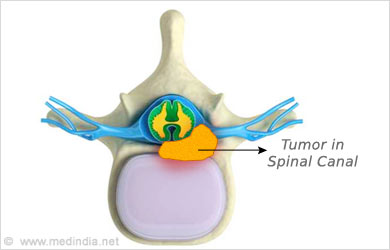
- Infections: Commonly patients with history recent surgery of spine or who had recent infection or an ongoing infection with high fever developing sudden neck or back pain should raise an alarm for further evaluation. Hematogenous spread of infection from a distant site can also be a cause for infection in the spine. Verterbral osteomyelitis or discitis are common conditions that tend to arise in this situation. Usually acute infections are of bacterial origin, while chronic infections tend to be due to fungal or tubercular origin. MRI Spine is useful in concluding the diagnosis.
- Disc herniation: The most common site is L4-5 OR L5-S1. It presents with pain and weakness in the lower back that radiates through the buttocks, thighs to the lower leg. In case of more than one nerve involvement cauda equina develops, which might present with weakness and pain in the both the legs with loss of bladder and bowel control. In this situation emergency decompression is advised to avoid permanent neurological damage. MRI spine is the choice of investigation.
- Spinal stenosis: It is the narrowing of the spinal canal due to congenital abnormalities or bulging intervertebral discs or hypertrophy of the facet joints / ligamentum flavum. It presents with symptoms of cauda equina. MRI spine is the choice of investigation.
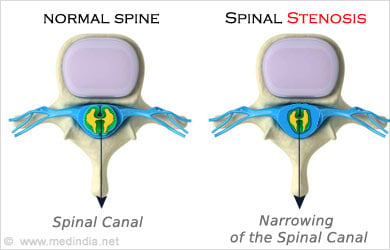
Frequently Asked Questions (FAQs)
1. How common is spinal Injury?
It is common in young men between the ages 16- 30 years in comparison to women. Most commonly the cause is traumatic injuries.
2. What are the common symptoms related to Spinal Injury?
Symptoms can be loss of motor, sensory functions along with reflexes that are lost completely or partially depending upon the extent of damage.
3. What is the prognosis of spinal injury?
Early mobilization and rehabilitation improves chances of speedy recovery.
4. What are the levels of spinal injury?
Levels of Spinal Injury suggest which part of the spinal cord is affected for ex., cervical, thoracic, lumbar and sacral segments. Higher the level of injury severe is the dysfunction expected.



